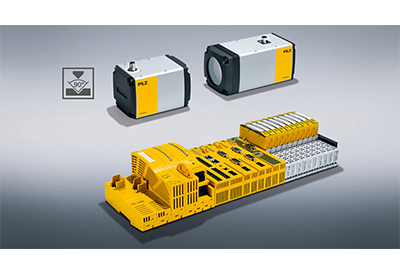New Cooling Solution Uses Water for Single Phase Direct Liquid Cooling: Rittal Develops Megawatt Cooling for AI
June 27, 2024

Artificial intelligence (AI) promises revolutionary benefits. Is the IT infrastructure ready? Data centre operators are breaking new technological ground with their technology partners. Rittal now presents a new cooling solution that delivers over 1 megawatt of cooling output and paves the way for AI. This is because the demand for computing power is growing so fast that a completely new level of scaling, cooling, power distribution and energy efficiency is required. The global system provider is thus entering a new and expanding field of IT cooling, in terms of both performance class and technology.
The opportunities offered by artificial intelligence appear gigantic. In June 2023, McKinsey predicted that the increased productivity brought about by GenAI could add between USD 2.6 and 4.4 trillion a year to the global economy. “If even a fraction of this is could realised, the IT infrastructure would have to grow as quickly as possible and be technologically rethought in key areas,” says Philipp Guth, CTO on Rittal International’s Management Board.
The power density for AI applications such as the training and operation of large language models (LLMs) in future data centres or high-performance computing, which is already widespread, will rapidly push current conventional air cooling to its physical and economic limits. The new, ultra-fast graphics processing units (GPUs) produce so much heat that manufacturers are designing them for powerful direct liquid cooling.
In close cooperation with several hyperscalers, Rittal has developed a modular cooling solution that delivers a cooling capacity of over 1 MW with direct water cooling, so achieving the power densities needed. “A high level of standardisation and scalability through modular design and global availability is required to enable rapid infrastructure expansion technically, economically and organisationally,” says Guth.
Modular platform for single phase direct liquid cooling
Rittal uses coolant distribution units for single-phase direct liquid cooling with water, designed for particularly easy serviceability.
How does this work? With modularisation and the design advantages of the Open Rack V3, the development of which Rittal has driven forward in the Open Compute Project (OCP): Following the example of the power supply, the server in the rack is connected to the central inlets and outlets of the water circuit via standardised connections. Functional units such as the central controller unit and several coolant conveying units (CCUs) – depending on performance requirements – are completely modular and can be easily slid into the rack. They guarantee high availability through n+1 redundant design. Leakage monitoring begins at the component level. This concept offers a major benefit in terms of service: Components such as controllers, sensors or the pump units of the in-row solution can be maintained during operation and easily replaced via “hot swap”. Power is supplied via the rack’s standardised DC busbar.
Cooling output of over 1 MW
“The combination options of the platform modules are designed for a high level of flexibility. They complement the Rittal system range as additional building blocks with coordinated modules for all the pillars of the data centre OT, such as rack, cooling, power, monitoring and security,” explains Lars Platzhoff, Head of Rittal’s Cooling Solutions Business Unit.
The liquid-to-liquid solutions cool as a bayed solution for racks over 1 megawatt; up to 100 kW in a single rack. They are also ideal for reducing the CO2 footprint through heat recovery. Rittal uses its experience to support data centre planning so that the heat is transported efficiently from the manifold in the rack for further use, for example in district heating networks.
Liquid-to-air variants are also available for data centres without a water connection, which release the heat into the air in the data centre through the rack’s rear door or via a side cooler as a closed system.
Infrastructure directly in the rack
“Increasingly, power, cooling and monitoring are being integrated directly into the standardised rack as fundamental pillars of the IT infrastructure. The main drivers of this trend are multiple hyperscalers and server OEMs, for whom we are their main supplier of racks,” Mr. Guth says: “We are convinced that this concept will soon become the standard for our global IT customers because ever higher performance and rapid scaling will be needed. Besides hyperscalers, it will also become interesting for increasing numbers of colocators.”
Rittal offers its customers flexibility: “We are not limiting ourselves to the Open Rack V3 in 21-inch technology. Variants for our VX IT racks will also follow in 19-inch,” Mr. Platzhoff points out. Full integration into the Rittal system platform is a relevant lever for rolling out the infrastructure needed for AI applications on a large scale – from large hyperscale data centres to small enterprise data centres. “Direct Liquid Cooling is the enabling technology for AI. Our development has been inspired by our major global customers and Rittal’s many years of experience in IT and industry; 20 years of HD IT cooling and more than thirty years of climate control for control systems, circuitry and machines under the most difficult industrial conditions,” Mr. Platzhoff explains: “We want to make the result available to customers – both large and small – as soon as possible.”
More Information
Related Story
Blue e+ Fan-and-Filter Unit: More Power for Your Enclosure Cooling
Rittal Blue e+ fan-and-filter units help you to achieve your climate goals while at the same time reducing your energy costs. The 40% greater air throughput of the new fan-and-filter unit with pleated filter – compared to a chopped-fibre filter – is unrivalled by any other unit on the market.






